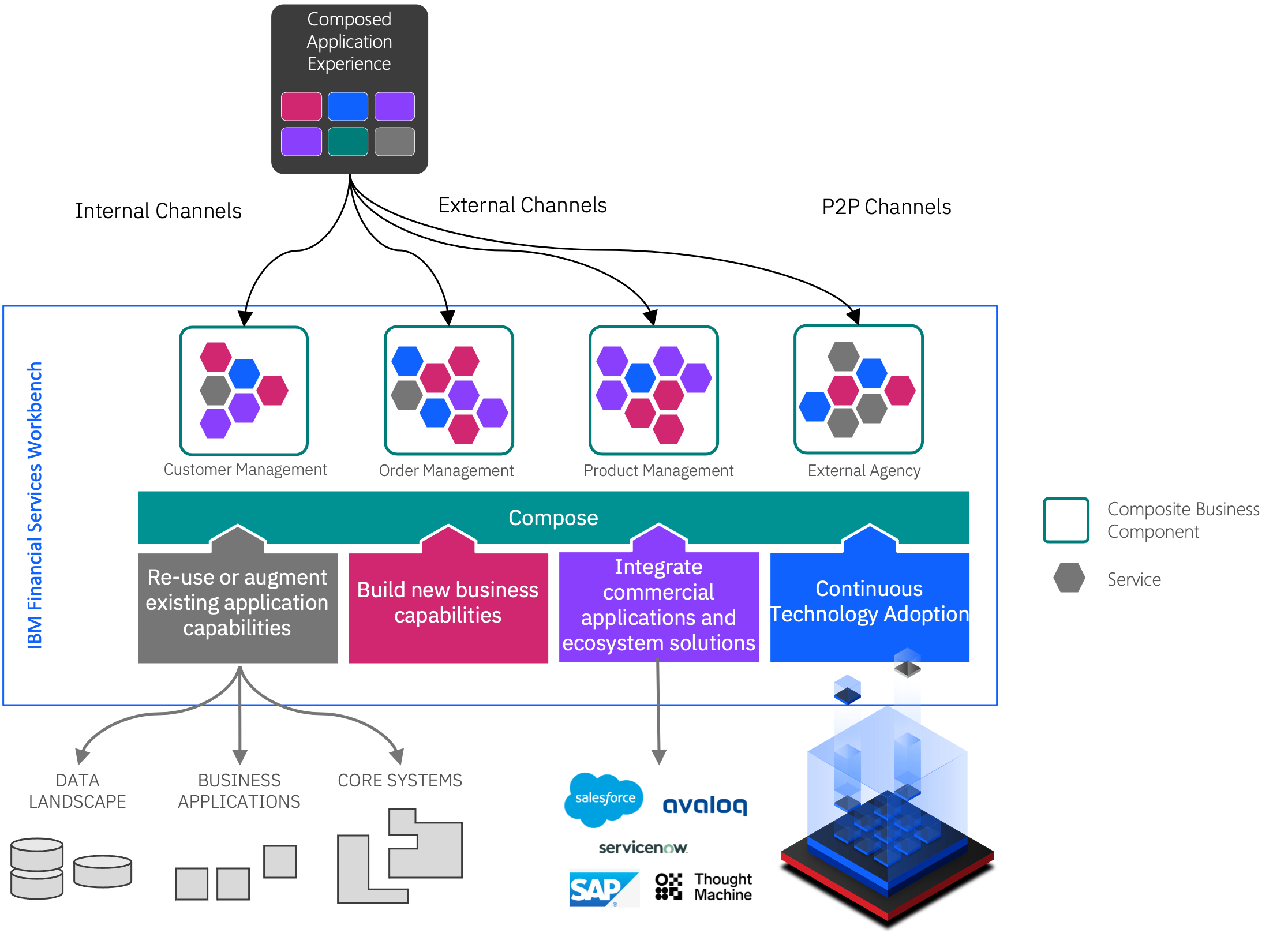Getting started
Get a short introduction in the product, its components and have a look at the latest release notes.
What is IBM Financial Services Workbench?
IBM Financial Services Workbench is a low-code and pro-code solution development and composition suite - designed for the cloud. It helps banks to transform digital business opportunities into cloud-native solutions. To this end, the offering has a strong emphasis on enabling people in their different roles to collaboratively design, implement and test microservices.
Technical analysis results can be directly mapped to concepts and capabilities which are planned and organized with a business perspective. The open architecture provides choice to re-use existing, include 3rd party or create new domain services. The freedom to compose solutions protects past investments in existing business capabilities, enables best-of-breed solutions, allows a phased modernization of existing solutions and enables progressive infusion of new technologies.
Collaborative design and development tools with low-code and pro-code stacks provide choice to different developer skill profiles to design and build deployment-ready solutions based on microservice architecture principles. Managed development stacks leverage industry best practice architecture principles and ensure coherence. They provide access to specialized knowledge and modern business tools without the need for extensive and expensive training.
Adoption of new technologies is a constant requirement throughout the lifecycle of modern business solutions. Composite Business Solutions can leverage any technology capability to create and evolve business solutions. Pre-integrated IBM CloudPak capabilities provide choice and secure access to the latest technology.

The composite solutions run natively on Red Hat OpenShift, the leading enterprise Kubernetes platform. RHEL supports any cloud, any virtualization and any hardware and OpenShift provides everything out-of-the-box.
Key benefits
IBM Financial Services Workbench ensures state-of-the-art architecture principles, encourages re-using and sharing assets and supports sustainable innovation. It also focuses on microservice architecture and provides guardrails and best practices as well as guaranteed alignment of design, code, platform architecture and patterns.
While providing coherence in solution implementations there is also segregation of solution and platform code.
IBM Financial Services Workbench utilizes cloud-native best practices:
all components utilize common logging patterns and infrastructure to ensure consolidated views
all components provide unique, consolidated trace IDs throughout for comprehensive end-to-end traceability
federated Identity and Access Control based on OIDC compliant security providers all throughout
automatic scalability based on container technologies
Reduction of time-to-market:
Co-creation, open innovation, and democratization of technology shortens development times through division of labor between parties and inclusion of additional business and developer skills.
Improvement of fit-to-market:
Composable Solutions enables cherry-picking of best-of-breed business capabilities to meet customer expectations, either built internally or sourced externally.
Reduction of cost-to-market:
Progressive development with focused investments in fit-for-purpose solutions and business capabilities that deliver value to the business.
New market and ecosystem opportunities:
Combination or inside-out and outside-in innovation enables new business models and partnership opportunities - which are implemented faster and at lower cost.